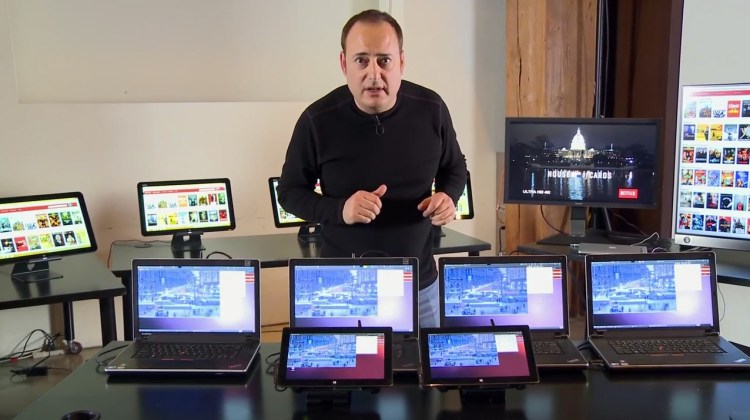Steve Perlman, the Silicon Valley entrepreneur behind technologies like WebTV and OnLive, knows how to captivate an audience.
On Wednesday, Perlman revealed a wireless technology he’s been working on for 10 years: pCell. VentureBeat attended the unveiling at Columbia University, Perlman’s alma mater, after which we spoke with him to learn more about the “transformative” technology.
In front of an audience of students, journalists, and business leaders at Columbia, Perlman showed eight iPhones streaming HD video sharing just 5 MHz of spectrum. Then, in another application of pCell, he demonstrated multiple 4K streams (of Netflix’s House of Cards) using 10 MHz of spectrum.
Now you can watch those demos for yourself.
Perlman promises pCell will facilitate super-fast mobile connections. Unlike traditional cellular systems, pCell enables an unlimited number of devices to share the same spectrum simultaneously, said Perlman.
The entrepreneur is so confident his technology will disrupt the wireless industry that he’s self-funded Artemis Networks, his 12-person wireless startup. (The $500 million he made selling WebTV to Microsoft in the late 1990s probably didn’t hurt his decision to eschew early-stage venture capital, though he might have had a hard time finding backers after OnLive’s fall from grace.)
If pCell works, it’s arriving at just the right time: Wireless spectrum is a finite resource, and we’re quickly running out. When there’s a spectrum crunch, calls drop and data services degrade. It’s already an issue in major U.S. cities like New York, Chicago, and San Francisco.
With the help of its partners, Artemis plans to begin installing pWaves, its little pCell base stations, throughout San Francisco and New York later this year.
Perlman said there’s little deployment risk because pCell doesn’t require a new generation of devices. It’s compatible with standard LTE (Long-Term Evolution) devices, like iPhones and Android mobile phones. They can use pCell if it’s available; if not, they’ll fall back to LTE or 3G. And because it’s more efficient than existing wireless systems, pCell requires less battery power, he added.
“pCell is crazy disruptive,” Perlman told VentureBeat. “It is disruptive in the sense that it’s really advanced science and mathematics. It’s disruptive because of super awesome hacker coding — I haven’t seen code written this efficiently since Bill Atkinson’s QuickDraw for the Macintosh. Think of the value of QuickDraw: it launched desktop publishing. Ok, this just launched a whole new type of communications for wireless — plus some secret stuff that’s even bigger.”




![Reblog this post [with Zemanta]](http://img.zemanta.com/reblog_e.png?x-id=ea6ced18-3662-4229-88b6-116c494f246f)

